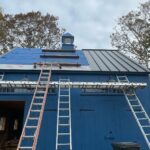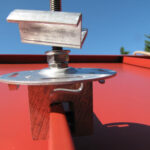Residential Solar Power Economics Are Compelling – With or Without Subsidies
May 19, 2015 | By Mike Gonet | Filed under: Education, General, Green News, Solar Energy
Almost as inexorable as death and taxes has been a rising secular trend in the demand for electricity in the United States – at the utility companies/wholesale level, that is. Or so we have always thought. Yet, since the summer of 2008 electricity demand as seen by the utilities has marginally declined. That has not happened so consistently for so long since the 1930s Great Depression. What is going on?
The stagnant economy, an aging population, conservation measures, and the initial steps towards rationalizing the nationwide grid into a “Smart Grid” have played roles. The latter initiative will play an important role for years. Contemplate the U.S. grid as a giant electricity generation and distribution plant, and then think of the possible efficiencies enabled by bringing manufacturing standards from the 1960s into the 21st century and you will get some idea of the potential. However, another even more exciting trend driving the decline of electricity demand at the grid level is the plummeting cost of solar power generation.
Those of us who have kept an eye on solar power for decades do a mental double take when informed that at long last solar power is economic versus the cost of buying electricity from your local utility. But it is. It is no longer a niche option suitable for remote locations far from the grid or for early adopters who feel they have the luxury of making an ecological statement independent of of the pecuniary cost/benefit calculus. A recent Deutsche Bank report (link here) surveyed a wide spectrum of developed and developing countries around the world and concluded that in many of them, including in the United States, the cost of solar power is already below the cost of retail electricity and will soon approach wholesale averages for fossil fuels. Solar power’s day in the sun (please forgive the bad pun) is at hand. From the Deutsche Bank report:
“The economics of solar have improved significantly due to the reduction in solar panel costs, financing costs and balance of system costs. Overall solar system costs have declined at ~15% CAGR (compound annual growth rate) over the past 8 years and we expect another 40% cost reduction over the next 4-5 years.”
Note that this conclusion holds for unsubsidized solar power residential or industrial installations. The various tax credits and other subsidies available to user-level installations in Massachusetts and other states nudge the economics for the homeowner further in the positive direction.
Why are we highlighting this exciting (to us, anyway) news in this blog? We are glad you asked. As has been featured previously on this blog, here, metal roofing plus solar is a “dream team,” for a variety of reasons. Here are the major ones:
(1) Unless you want to have to de- and then reconstruct your solar panel installation before its time, solar-on-asphalt is a manifestly poor idea. Most solar manufacturers have a warranty of 25 years. Asphalt roofs last an average of 16-years, contractor’s claims or nominal promises notwithstanding. Need we say more?
Well … yes, actually. Aluminum roofing outlasts the solar panel system’s expected 25-30 year lifetime. Solar panels can be installed on standing seam metal roofing with attachments that do not penetrate the roof or add ballast.
(2) Asphalt roofs are inherently prone to failure, large and small. (Two words for those who just came through this past coastal New England winter: “ice” and “dam.”) Integrating solar with asphalt will exacerbate that tendency due to the increased load and roofing penetrations. The roofing perforations required for the installation of a solar panel mounting system increase the likelihood of leaks later, ultimately shortening the already short lifespan of the asphalt roof.
(3) As discussed on our “Why use Aluminum in Construction?” web page, here, aluminum roofing has environmentally compelling points in and of itself. Why combine an environmentally friendly power generation source with an environmentally destructive roofing material such as asphalt?
Classic Metal Roofs, LLC has years of experience in the field. Many homeowners disclose in conversation that they are planning on having a metal roof installed and then intend to have solar panels mounted on the roof later. If you do plan to mount solar panels on your metal roof then the metal roofing contractor absolutely must be informed about this. This cannot be overstressed. Metal roofing requires substantially reinforced fastening when solar is in its future. In most, if not all, cases if you already have a metal roof and did not have solar taken into account during installation, your roof may be unable to successfully withstand a subsequently attached set of solar panels.




